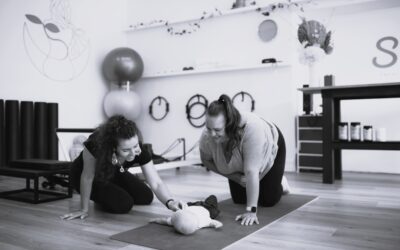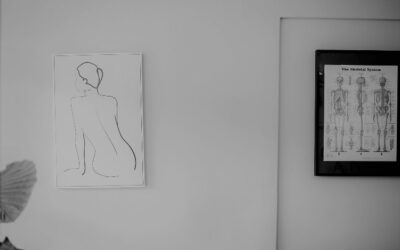Menopause is often defined as a women’s last menstrual period or the time when a woman’s reproductive years have ceased. This can range from anywhere beyond 50 years of age, although recent studies are finding more and more women are experiencing menopause between the ages of 40 and 45, usually defined as early menopause. This could be attributed to low ovarian reserve causing a rapid decline in the oestrogen hormone. Further investigations have found that perfluorocarbons (PFC), which are man-made chemicals used in numerous household products are associated with endocrine disruption in women, predisposing them to early menopause. Genetic factors also play a role in the age at which a woman commences menopause, depending on previous generations prior.
Natural menopause is defined as the absence of menstruation or a regular monthly bleed over a period of 12 months. The years before are termed peri-menopause and post-menopause respectively, as women can experience symptoms for up to 10 years before and after!
Many women experience a vast majority of symptoms, but most commonly include vasomotor symptoms, or better known as the “hot flush,” psychological or cognitive changes such as mood swings and anxiety, and physiological symptoms such as decline in bone mineral density and cardiovascular changes. Physical activity and exercise are proven to reduce the side effects of these common changes.
MOVEMENT FOR MENOPAUSE
Movement for menopause is vital, due to the altered hormonal profile seen in women experiencing menopause, there is an increased risk of osteoporosis, bone fracture, and cardiovascular disease to name a few. The evidence-based research on movement and exercise for menopause has been shown to manage the conditions mentioned above and reduce the severity of menopausal symptoms.
A major change that occurs in menopause is weight gain for women, particularly around the waist, predisposing her to an increased risk of cardiovascular disease, breast cancer, and type 2 diabetes. Being physically active and increasing your exercise routine can aim to reduce the risk, and many women also see changes in the following:
- Improved sleep and reduction in disturbances experienced
- Improved mood
- Improved weight control
- Increased/maintained bone density and strength
- Improved quality of life
- Reduced stress
- Improved balance and falls prevention
Tailoring an exercise program and health advice specific to your needs and concerns whilst in the peri-menopausal or post-menopausal stages of life can be super helpful. A Nurse’s Health Study looked at a 20-year follow up in women who were post-menopausal and highlighted women who exercised greater than 3.5 hours per week had decreased incidence rate of coronary heart disease, and just one session of exercise per week saw a 22% reduction in the chance of developing depression – so if exercise can help your mood whilst menopausal, why not try?!
THE MOOD ON MENOPAUSE IN SOCIETY
Menopause represents a stage in a woman’s life where reproduction is now impossible. This can have large psychological concerns, where they often feel a burden or disregard for symptoms and emotions. A study investigated the effects of menopause on women between the ages of 45 to 55 and found three in five women between the age 45-55 experiencing menopause say it has negatively impacted them at work, and one in four have considered leaving work because of menopause. Most reported it had a negative effect on their concentration levels, patience, and stress levels. With only a quarter of women in the workplace feeling comfortable to share with management reasons for feeling this way, due to embarrassment and unsupportive workplaces. Clearly, there is still a stigma attached to menopause and tribunals have been won by women who have felt discriminated during their transition, with most not being able to access support or adjustments in a workplace. Unlike pregnancy or maternity leave, menopause is not well understood or provided for in workplace, cultures or policies, and training. We need to continue to bring attention to change so a woman’s transition through menopause is better understood and acknowledged!
HOW WE CAN HELP
So, what type of exercise is best? Here at Seed, we work closely with you and focus on a holistic approach and suitability for each woman. A variety of aerobic, strength, balance, and flexibility exercises should be prescribed, as these are known to assist with bone mineral density levels, strength, and stability. We also ensure the woman is aware of their current bone density levels and if supplementations or blood tests are required to ensure we are covering all bases and providing the utmost care in this stage of life.
We also have class options!
Our ‘Light Feet’ class is very popular, we focus on improving functional balance, increasing lower and upper limb strength as well as targeting the cardiovascular system with safe, fast-paced movements to increase heart rate and laugh along the way too!
Our functional movement classes are also targeted to women under 50 years who may be peri-menopausal and require regular functional exercise.
If you need a hand in navigating menopause, we are here to help. Please get in touch with us to find out more on how we can use our integrative and women’s health focus to help you to feel your best through menopause and beyond!




